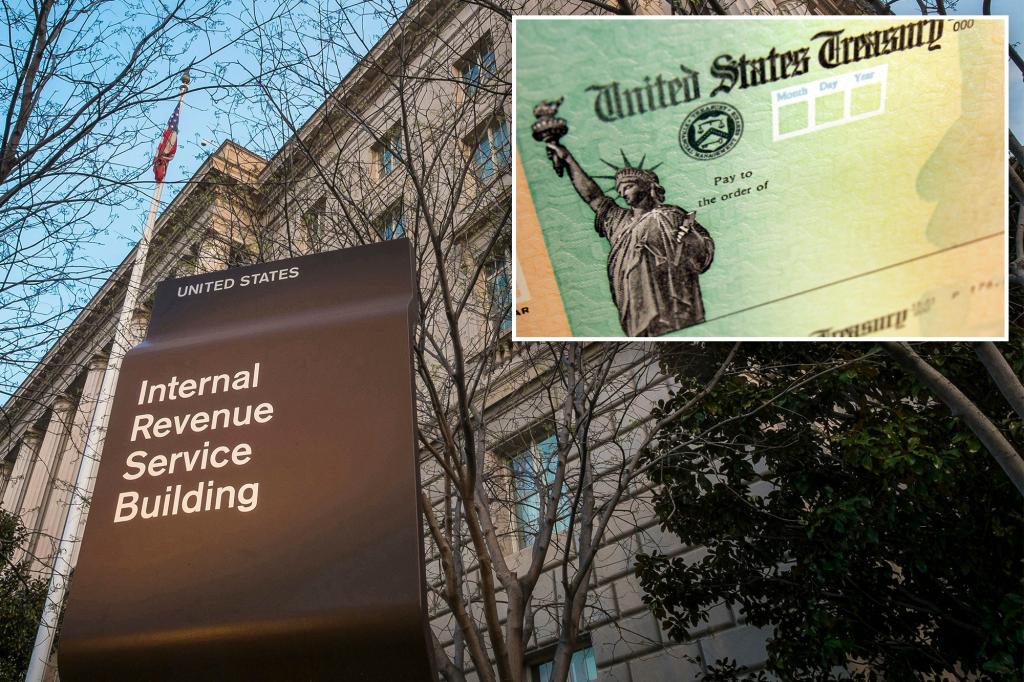The Internal Revenue Service (IRS) has initiated a process to distribute approximately $2.4 billion in special payments to an estimated one million taxpayers who inadvertently missed out on claiming the Recovery Rebate Credit (RRC) related to the COVID-19 stimulus payments. This credit, available on 2021 tax returns, provided a pathway for eligible individuals to receive the full amount of stimulus funds they were entitled to if they had either missed a payment or received a smaller amount than they should have. The IRS identified this oversight through internal data analysis, revealing that a significant number of taxpayers had left the RRC field blank or entered $0 despite being eligible for the credit. This proactive effort aims to ensure that all eligible individuals receive the financial support intended by the stimulus legislation.
The special payments, with a maximum amount of $1,400 per individual, will be disbursed automatically throughout the remainder of 2024 and into early 2025. The IRS will utilize the bank account information provided on the taxpayers’ 2023 tax returns for direct deposit, or send paper checks to the addresses they have on file. The calculation of these payments is based on the individual’s eligibility criteria for the original stimulus payments, which considered factors such as income, filing status, and the number of dependents. Importantly, eligible recipients do not need to take any action to receive these payments; the IRS is handling the disbursement automatically. Furthermore, the IRS will send individual letters to each eligible taxpayer, notifying them of the special payment and providing further details.
While the majority of eligible taxpayers have already received their stimulus payments, this specific initiative targets a smaller group who missed out due to oversight or a lack of awareness regarding the RRC. The IRS emphasizes that the likelihood of receiving one of these special payments is relatively low, as it pertains only to those who filed a 2021 tax return but failed to correctly claim the RRC. This underscores the importance of accurately completing tax returns and understanding available credits, particularly in situations involving government assistance programs.
For taxpayers who have yet to file their 2021 tax return, the opportunity to claim the RRC remains open. The IRS strongly encourages anyone who may be eligible to file their return and claim the credit by the April 15, 2025 deadline. This applies even to individuals with minimal or no income from employment, business, or other sources. Claiming the RRC is crucial for those who believe they may have missed out on stimulus payments or received a lower amount than they were entitled to. This provides a final opportunity to rectify any discrepancies and receive the full benefit of the COVID-19 relief measures.
The COVID-19 stimulus payments were distributed in three separate rounds, totaling $814 billion in financial assistance to households impacted by the pandemic. The first round, under the CARES Act in March 2020, provided up to $1,200 per eligible individual and $500 per child. The second round, disbursed under the Consolidated Appropriations Act in December 2020, offered up to $600 per eligible individual and $600 per child. Finally, the American Rescue Plan Act of March 2021 provided the largest payment, up to $1,400 per eligible individual and $1,400 per child. These payments were designed to provide immediate economic relief to individuals and families struggling with the financial consequences of the pandemic, such as job loss, reduced income, and increased expenses.
In summary, the IRS’s automatic distribution of special payments aims to rectify a specific oversight related to the RRC. While the number of individuals impacted is relatively small compared to the overall number of stimulus recipients, this initiative highlights the importance of accurate tax filing and awareness of available credits. The IRS’s efforts to identify and correct this issue underscore its commitment to ensuring that eligible taxpayers receive the full financial support intended by the COVID-19 relief legislation. The three rounds of stimulus payments provided significant financial assistance to millions of households during a period of unprecedented economic uncertainty, and this final effort aims to close any remaining gaps in the distribution of those funds.

